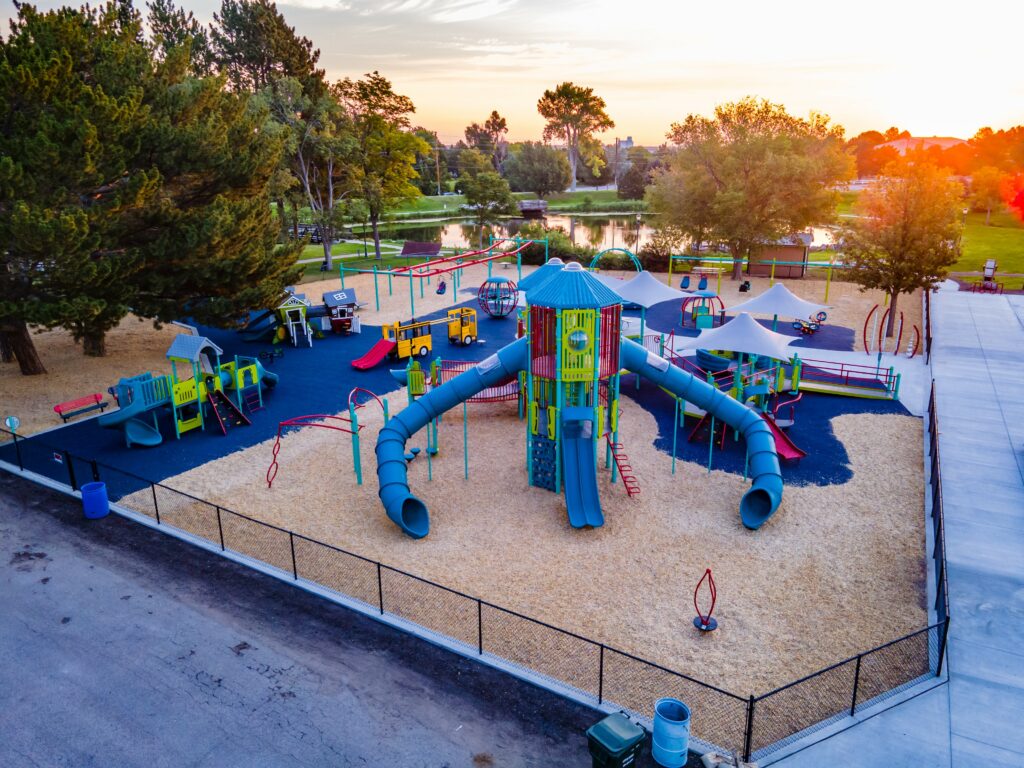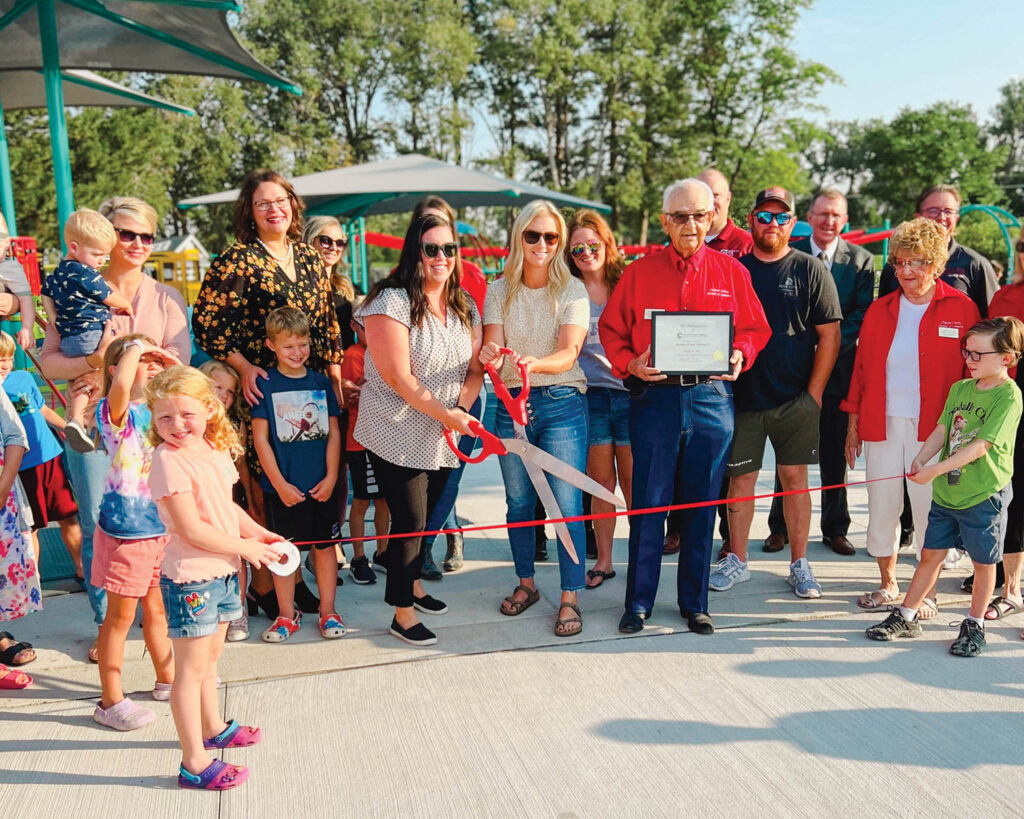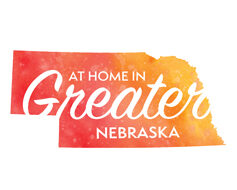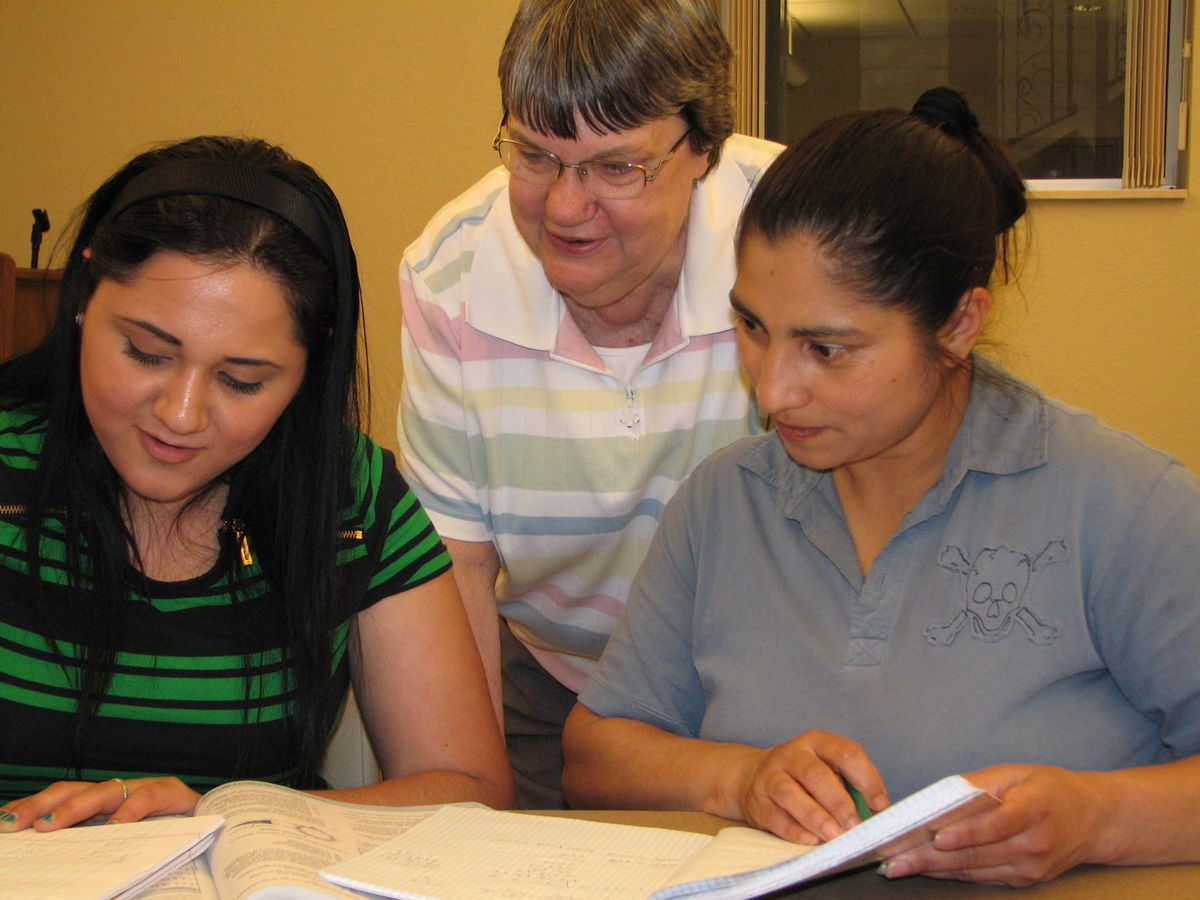
Photo Courtesy of High Point Aerial Images
An interaction at Sidney’s new playground remains fresh in Ally Benzel’s memory.
One day while enjoying the new space, she watched a nonverbal child approach another child and, using a tablet, ask for a push on the merry-go-round. Away they went, no questions asked.
“It was the greatest thing to see,” Benzel said. “Neither one of them realized how cool it might be.”
That neither child recognized the significance of the moment is a great sign to Benzel because the new playground was designed to be inclusive of any Sidney youngster who wants to join the fun—making any sort of barrier to play not worth a second thought.
The park is a result of the community embracing a big idea proposed by Benzel and her sister, Madi Wilkinson. Both are physical therapists, with Wilkinson working in pediatric physical therapy. The sisters and their colleagues recognized the park as an ideal place to meet with patients—were it not for its aging design. For the playground to realize its potential as a space for people of all abilities, nearly everything from equipment to infrastructure required an overhaul.
“It was gravel in most areas with no accessibility for our patient population with extra needs,” Benzel said. “That made it a hard space.”
So, the dream started at the ground level. At the very least they wanted to rid the playground of gravel and install surfaces easily traversed by all. They recruited about 10 volunteers who began researching and making contacts. They selected Landscape Structures based on the company’s breadth of experience in designing and constructing universally accessible playgrounds. The volunteer committee swelled to 40 members eager to apply their time, talent, or treasure to the endeavor.
The community rallied around the project, raising more than $700,000. Donations came from the Sidney Community Donor-Advised Fund (an NCF affiliated fund), Knights of Columbus, Farris Engineering, Platte Valley Bank, Sidney Regional Medical Center, Adams Industries, Black Hills Energy, Nelnet, and many community members.
Landscape Structures and its local consultant, Outdoor Recreation Products, broke ground in April 2022, and Sidney waited.
“People were very interested in the project,” Benzel said. “It’s cool to see how many people believed in a big dream.”
A playground for all
Landscape Structures adheres to Universal Design Theory, which offers seven principles to guide designers toward more equitable projects. To vastly oversimplify, these guidelines urge designers to create useful, intuitive, efficient, and flexible environments for individuals of various abilities and sensory demands.

“I would personally say it’s really something that invites everyone to use a space to the best of their ability, whatever that a bility may be,” said Jill Moore, an inclusive play specialist at Landscape Structures. “Young, old, and everyone in between.”
At the new park, universal design inspiration takes many forms. Children using wheelchairs can roll onto a merry-go-round that sits flush to the ground. A series of five large metal chimes and a tongue drum allow children to foster sonic creativity. Gliders, see saws, and other playground staples are also built with universal use in mind.
“I think the We-Go-Round is a great example of universal design,” Moore said. “You can stand on it, I can roll onto it. We may be using it in different ways but because of design considerations that went into it, it’s going to invite a ton of people to use it.”
A review of the extensive research conducted on inclusive and sensory play reveals multiple benefits. Key among these is play’s effect on the development of executive functioning and the prefrontal cortex, according to a 2018 published by the American Academy of Pediatrics, which helps moderate impulsivity, emotion, and aggression as well as improving problem solving, self-control, and mental flexibility.
A very important kind of play, according to the Universal Design Handbook, is free play—unstructured, spontaneous, and autonomous. It’s the kind of play that occurs naturally at a park or playground. If you “played pretend” as a kid, that’s what many experts call free play. Research indicates this type of play encourages negotiation and cooperation, which can boost social and language skills.
The benefits of play are many. The design of many outdoor spaces and playgrounds, however, limits the number of children who can participate in that sort of freewheeling escapade.
Fortunately, kids seem to always find a way to involve everyone.
“The best part about kids is they inherently want be inclusive,” Moore said. “They’re generally going to try to figure out how to incorporate everyone in play. [Inclusive playgrounds] provide the opportunity for other kids to experience disability and become these fierce little advocates on their own.”
An example for other communities
Neither Benzel nor Wilkinson had much experience in fundraising for such a large project, but they relied on a network of experienced colleagues and mentors to help them navigate the road to a new playground.
“We really had a couple good mentors in the beginning of the process,” Benzel said. “Helping us understand wording and how to ask, and then we had lots of people in our community who had done projects.”
Some of those mentors included volunteers from other NCF affiliated funds, and NCF board member Pam Abbott connected them with NCF staff who offered assistance and supported them along the way.
“One of the things we learned when applying for grants or asking for money is you have to have some money to get money,” Benzel said. “When the Sidney Community Donor-Advised Fund offered us a matching grant, that’s when our project really took off and became more of a reality. That’s how we really gained traction.”
The committee learned getting a “no” isn’t a stopping point, and as more people said “yes” to donation asks, fundraising became easier.
Benzel said she and Wilkinson have been contacted by nearby communities hoping to achieve a similar feat. They hope their experience inspires others who may be dissuaded by their own lack of fundraising credentials. It takes more than two people to succeed, and the sisters know how important community support is to realizing dreams.
Youth played a role in planning the park as well. The committee eventually opened the discussion to kids, and their input resulted in the new park’s zipline and mega tower.
“That was a big a-ha moment for our kids,” Benzel said. “It seemed they felt they had a voice.”
Most communities are receptive to the idea of making common spaces more inclusive, Moore said. In many instances, residents are just not aware of the shortcomings of their parks and playgrounds. It’s not intentional—once they start looking through a lens of inclusion, they become supportive.
“It’s not that communities are against it,” Moore said. “They tend to not think about it until it’s right in front of them. We learn a lot once we start to get the ball moving.”
Benzel, Wilkinson, and Sidney residents certainly learned a lot on their way toward the new playground. Many important pieces played integral parts in their journey to a more inclusive community.
“It was a risk our community took,” Benzel said. “We didn’t have a lot of fundraising experience to this magnitude. It’s not just the financial. So many people volunteered their talent, advice, and time. That’s what made it happen.”
So many people volunteered their talent, advice, and time. That’s what made it happen.



